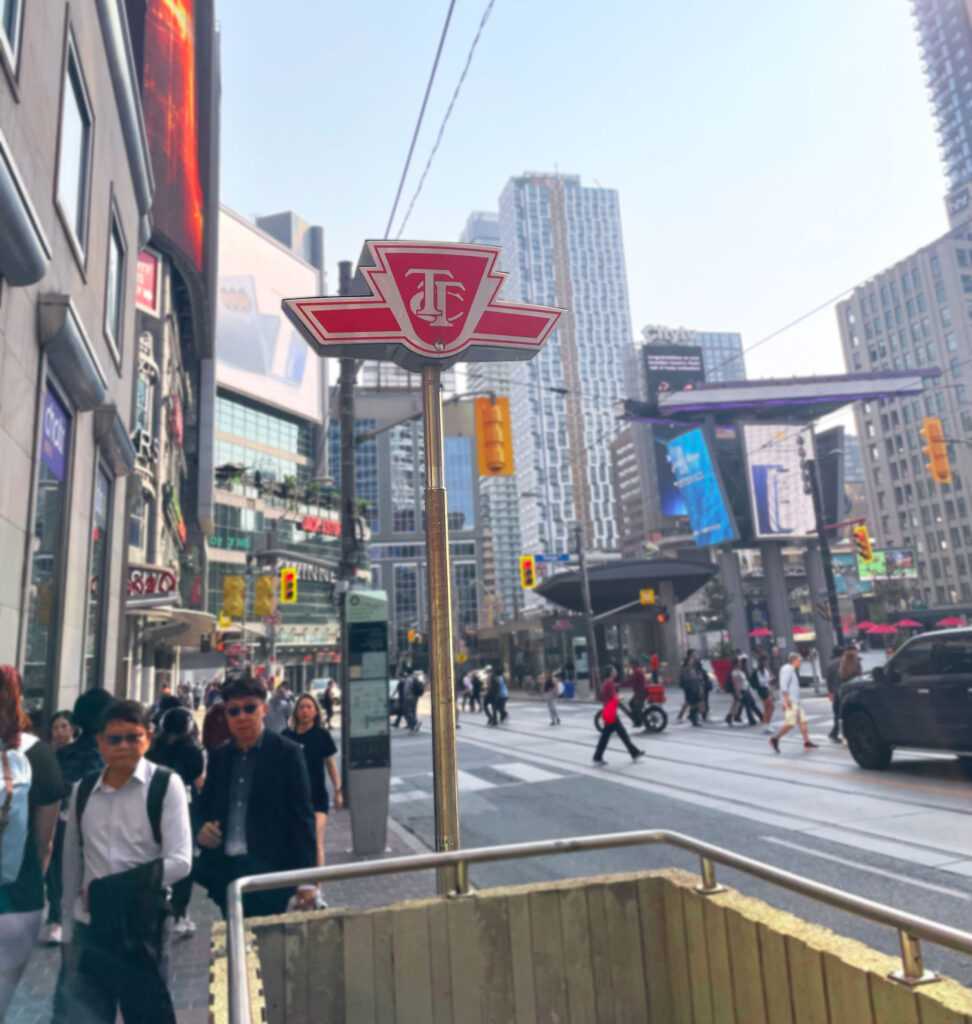
Communicating detours is the focus of the latest update on the Transit app that many TTC users rely on to get around the city, including TMU students. The transit app is created and maintained by a Montreal company, but it uses on data provided by local transit authorities, like the TTC.
Delays and detours are at the core of a negative commuting experience, according to TTC spokesperson Stuart Green.
“One of the most frustrating things for customers is when we have to divert service due to unforeseen circumstances,” said Green, adding that riders deserve to know where their train is and when it’ll be arriving.
According to Green, the new update added on Sept. 3 allows users to see in real time where vehicles have deviated from their regular route using an algorithm developed by the TTC. Users of the app can now identify where their vehicle is going and make their way over to the new stop.
For many students, commuting takes significant time out of their day. Around one third of TMU’s students ride transit for at least one hour in either direction, according to Raktim Mitra, co-director for TransForm, TMU’s transportation and land use planning research laboratory.
It’s important to make the experience as positive as possible, according to Mitra.
“If students [don’t] perceive their commute to be a barrier to their everyday experience, they have more interest in terms of coming to campus, engaging in extracurricular activities,” said Mitra.
A study launched in 2019 by StudentMoveTO found that 61 per cent of students consider their commute to be an obstacle to participating on campus, while almost half of students consider picking courses based on their commute.
“For the vitality of universities, it’s important that our students have good commuting experiences,” said Mitra.
Improving riders’ safety remains another priority for the TTC, according to Green. He said the TTC will continue to improve safety on-board for all TTC vehicles and at stations with increased presence of police, crisis counsellors and special constables.
The data is showing these steps to be successful so far. The rate of offences against TTC customers per 1 million riders was 2.34 in January 2023 and has reached a two year low at 1.48 in June 2024, according to data collected by the City of Toronto and TTC.
Navigating a Bumpy Ride
Other issues arise from riding the TTC, like reduced speed zones that are slowing down student commutes.
A Voice for Transit is an advocacy group started out of TMU, composed mainly of the school’s alumni, including its co-founder and executive director, Jean-François Obregon. “I would say addressing the reduced speed zones has to be number one,” Obregon said, referring to his top priority issue with the TTC. Students commuting may experience an additional 20 to 50 minutes on a bus or subway because of it, according to Obregon.
“I don’t see that being viable for too long, especially when students are being pressed for time,” Obregon said.
Students also need to make their displeasures known, said Obregon. While commitment to positive changes have been seen at the start of this semester, like increasing the number of trains at rush hour, improving communication about detours and safety on all TTC vehicles and at stations, more work must be done.
“It’s worth making a complaint on the TTC website,” Obregon said. “I would say it’s also worth writing to [your] local councillor.”
Students may feel cautiously optimistic about the TTC’s improvements in service, efficiency and communication with riders. Past years have been marked by significant cuts and major disruptions to TTC service. This semester appears to be a step in the right direction, according to Mitra.
“The recent changes that actually are beginning improvements to the service,” Mitra said, referring to updates to the Transit app and increased number of trains running during rush hour. “These are all good, particularly good for young adults, including university students, who rely on transit more often than any other population.”
A journalist at On The Record.

